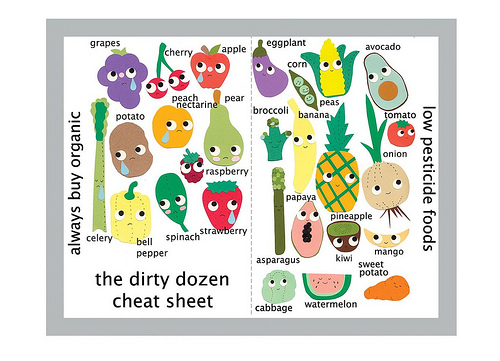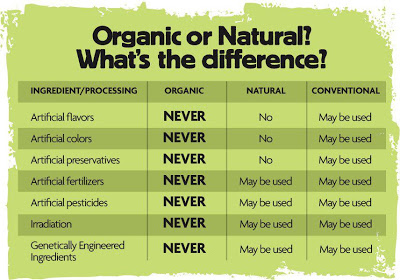Organic foods, cleaners and beauty products have been lining store shelves more and more in the past several years. The demand for organic products was not what it is today, however more people are catching on. Some would like to eat organic food, but just don’t have enough information as to why they should, or they aren’t sure if it really makes a difference. Below we will answer the question “Why buy organic?”
It is important to understand that there is a difference between “organic” and “natural.” Food companies get creative in their labeling, however “natural” is not what it seems. For example, artificial colors, flavors or preservatives are NEVER organic, and couldn’t even be considered natural.
Understanding Organic vs Natural
Noah Hammond seems to have a good understanding of organic foods. He does a great job of introducing people to organic foods, their benefits, and some advice on how to buy organic.
What makes organic food a better choice than conventional food found in grocery stores? The answer is that organic food is grown without pesticides and unnatural fertilizers. Instead, the soil which grows the food contains micro-organisms which produce minerals, vitamins and other nutrients to benefit our bodies. Non-organic foods do not provide the same benefits.
On another note, “natural” does not mean that a food product is organic. The term isn’t even regulated, but rather a suggestion that the food is somewhat close to its natural state vs. a different brand. For example, a piece of fruit may be called natural (even after it was sprayed with chemicals) simply because it was unprocessed while it was picked. Tricky, indeed!
We agree with Juice Beauty “… unless you’re an ingredient expert, there’s no easy way to tell if something is truly natural or not. Organic, on the other hand, isn’t a label you can simply place on your products to appeal to people who care about a greener, cleaner, healthier life.” To place the national USDA Organic seal on a product it has to be made up of at least 95% organic ingredients. So read your labels on not only your food but your beauty products and your cleaners. You may not be getting what you think you are paying for.
Now that we know more about what organic foods are and how they may be labeled, it’s important to select carefully what to buy organic at your grocery store and your local farmers market. Join a local CSA and get a box of fruits and veggies fresh from the ground each week. It’s fun to eat what is in season. It’s fresh, full of flavor and good for you. A few weeks ago we had Roselle (a.k.a. Hibiscus, Red Zinger) in our Community Supported Agriculture (CSA) box and we made pink antioxidant-rich Hibiscus iced tea, sweetened with liquid stevia. There were happy grandchildren in our house.
While some of us many not be able to afford to go 100% organic it is important to know which foods have the highest level of pesticides and additives. The Environmental Working Group (EWG) says that we can reduce our pesticide exposure by 80% by avoiding “The Dirty Dozen” and eating only the cleanest fruits and vegetables known as the “Clean Fifteen”.
The Dirty Dozen and the Clean Fifteen
To make shopping even simpler, a chart called The Dirty Dozen Cheat Sheet from Heidi Kenney can help make shopping for organic food less complicated.

The Dirty Dozen (higher contamination) include apples, strawberries, grapes, celery, peaches, spinach, sweet bell peppers, nectarines, cucumbers, cherry tomatoes, snap peas, potatoes and kale. You may have noticed that there are really more than a dozen. Stay informed as the list is increasing. The EWG now calls it the Dirty Dozen Plus! They offer a Shoppers Guide to pesticides in produce.
The Clean Fifteen (lower pesticide foods) include avocados, sweet corn, pineapples, cabbage, sweet peas, onions, asparagus, mangos, papayas, kiwi, eggplant, grapefruit, cantaloupe, cauliflower and sweet potatoes.
Sales of organic food are on the rise, and with good reason. With the growing concern of what the food industry is sneaking into our foods, Americans are finally coming to the realization that it is time to take back control of our food.
After all, whose health is at risk here?


Great info.